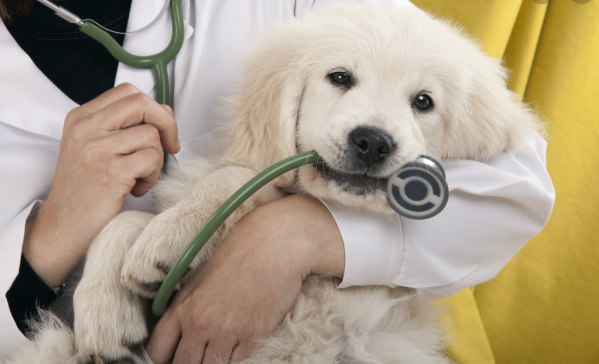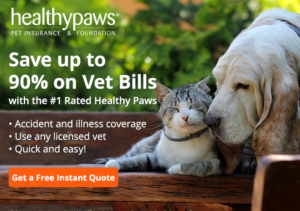
Every Pet and Human Deserves Great Health Care!
OUR CATS AND DOGS ARE our family members. This may explain why pet owners are increasingly investing in pet insurance. According to the North American Pet Health Insurance Association, pet owners spent more than $1 billion on pet insurance in 2017, insuring 2.1 million pets in the United States and Canada, a nearly 17 percent jump from the previous year.

If you’re thinking about getting pet insurance, here are some factors experts suggest owners consider, from premiums to genetics to overall quality of care.
Look carefully at the policies you are most interested in to understand what’s included – and what isn’t. For instance, a policy may not cover a development disorder like hereditary epilepsy if your vet believes your pet has had the condition since birth. Or, you may find that foods or nutritional supplements are not covered by insurance. Plus, health issues related to diseases that could have been prevented by a vaccine – if you didn’t get one for your pet – likely will not be covered by pet insurance.
Consider what’s covered – and what’s not – in each plan. Just as with a human insurance plan, typically, you’ll have a deductible and percentage options for vet bill payouts.
Generally, it’s a smart move to get pet insurance. Having pet insurance allows pet owners to make medical decisions based on the health and welfare of their pet, rather than what they can afford. If a family member – human or animal – has a major issue, there is no greater feeling than knowing you are covered.”
Be smart! Let your policy pay!

ObamaCare4Pets.com
As Vet Bills Add Up, More Opt for Pet Insurance

Two out of three American households—or about 85 million homes—own pets, and those lovable little roommates don’t come cheap.
Americans spent $17 billion last year on veterinary care alone, according to figures published by the American Pet Product Association. Per pet, that included $257 for the routine care of dogs and $182 for cats.
But accidents or illness can balloon costs, and to offset the expense, more households have turned to pet insurance, a niche product that for the first time last year grossed $1 billion in annual premiums.
Compared with auto, home and human health coverage, pet insurance is the runt of the litter. But that puppy’s growing.
Last year’s gross annual premiums were 23% higher than the previous year, when the total was $837 million, according to the North American Pet Health Insurance Association. The number of insured pets also increased, climbing to 1.83 million last year, up about 16% from the previous year.
That’s only 1% of dogs and cats, but insurers expect the expansion to continue.
“Twelve million puppies and kittens come into the world every year,” said Rob Jackson, chief executive officer of the pet insurer Healthy Paws. “There’s still great room to grow.”
One yardstick to assess the potential is the U.K., where a quarter of cats and dogs are insured, according to Laura Bennett, a pet insurance actuary and fellow of the Society of Actuaries.
Although animals that are more exotic than cats and dogs may be covered, insurers tend to focus on the two most popular companion animals.
In 2017, Americans owned 94.2 million cats and 89.7 million dogs, accounting for nearly half of all household pets, according to the pet product association.
(America’s 393 million pets also included other small animals, horses, birds, reptiles and fish. At 139 million, freshwater fish was the single largest category, accounting for 35% of the total. But come on. If you can’t cuddle it, is it really a pet?)
Insurance to offset the cost of veterinary care is a hybrid product. Like health insurance, it typically covers accidents and illnesses, but because pets are possessions, it is technically property and casualty insurance.
That’s the kind that’s purchased for homes and cars, but there’s a wrinkle: With car insurance, drivers don’t assume it’s OK to get into more accidents. Pet insurance may inspire a different response.
“If I go out and adopt a dog and buy an insurance policy, you don’t know how I’m going to behave,” Ms. Bennett said. “Will I go to the vet every time the dog coughs? You don’t know.”
There are no standardized actuarial tables to guide pet insurers in setting premiums. Each group crafts its own, often with the help of pet actuaries.
Among the lessons it has learned over the years is that different breeds have different health concerns.
“Golden retrievers are prone to cancers more so than other dogs that are otherwise comparable,” said T.J. Houk, Trupanion’s chief data officer and actuary. “Other breeds of a similar size have their own issues.”
That kind of information influences premiums, as does a pet’s place of residence.
“In New York there’s a very different level of available care than in most of the rest of country,” Mr. Houk said. “You see significantly higher prices there.”
With a $200 deductible, premiums for a mixed breed puppy in Manhattan would cost $76, Mr. Houk said. In Mobile, Ala., the same pet with the same coverage would cost $34.
Premiums also vary depending on a policy’s deductible, but in general, monthly pet insurance payments range from $25 to $150.
One reason for the growing appeal of pet insurance is the availability of increasingly sophisticated and expensive treatments.
“The cost of routine care is not going up,” Mr. Jackson said. “Where you find increases is in specialty care. That’s where you get the sticker shock.”
“The old treatment was to repair the ligament for around $1,200,” Mr. Jackson said. “Now, you can set the bone, put a plate in there, and for $4,500, the knee is as good as new. It’s the same condition but a new way to treat it.”
Read the whole article on wsj.com: Click here






